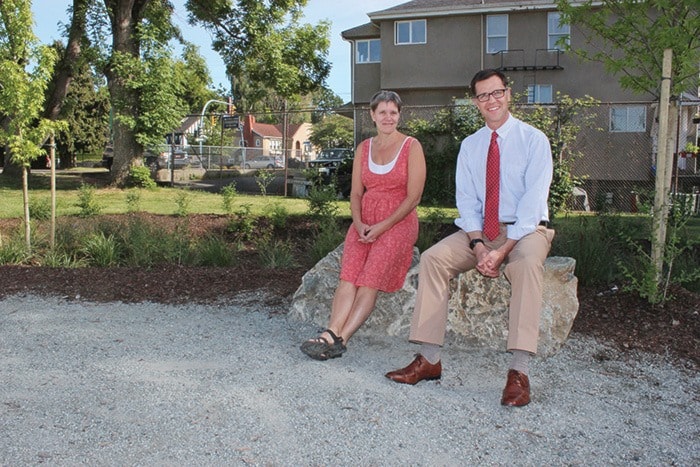In 2011, Kathie Cross noticed a troubling trend at Central Middle School.
Instead of playing in the playground or on the basketball court during recess and lunch, kids would line up outside Cross and other counsellors’ offices.
As many as 20 students would have lined up if she let them, Cross added, and she began to wonder, why?
At the time, the school’s play area consisted of a traditional playground with bars and slides, a basketball court and a field. After moving her office from the back of the school to the front, where she had a continuous view of the play area, Cross quickly realized there wasn’t enough play space for the roughly 540 students at the school.
“If you weren’t a basketball star and didn’t get to the playground before the other 540 kids, you really had no place to go and so a lot of kids would be really anxious and really stressed out during our break time because they didn’t know where they belonged,” Cross said.
“For a lot of the kids out there, this break time was not a fun way to spend time. Kids were trying to find ways to escape break time.”
A colleague started an art class, while Cross started a games day to keep students busy during the breaks, neither of which were sustainable and didn’t allow students to play freely, engage in down time and have access to nature.
That’s when Cross put the wheels in motion for a new naturalized playground — a space used as a playground that has natural elements.
After five meetings, students, parents, staff and community members drew a concept of what they wanted their naturalized playground to look like. Cross then took to the task of fundraising for the more than $95,000-project, most of which came from the community and students.
Last week, the school’s hard work came to fruition with the grand opening of the roughly one-acre playground.
Sitting at the front of the school between the existing playground and field, the naturalized playground includes a dozen newly-planted trees, cedar logs and boulders for students to sit and play on, a six-foot-high grass hill and a wet garden with plants. There is also a gravel pathway that winds around the park for wheelchair access.
Principal Topher Macintosh said it’s already getting a lot of use.
“As we expected, the kids took to it right away. We wanted (students) to discover and explore it,” he said, adding the second phase includes planting another eight trees. “They make up their games where the rules change every game and you have to jump from one log to that rock. All that is going on which is great. Every day is different.”
There are also quiet spaces for students to sit and chat with a friend or read a book. It can also be used for class presentations.
While there are other naturalized playgrounds in the Greater Victoria School District (there is one at Tillicum and Margaret Jenkins elementary schools), Macintosh said theirs is the largest.
Dr. Murray Fyfe, medical health officer with Island Health, said naturalized playgrounds allow students to be physically active, while exploring a natural environment.
“It really creates a different environment than other typical playgrounds that you tend to see in parks, which is more conducive for some students to both becoming physically active and also having social interactions with other students,” Fyfe said, noting about 23 per cent of the students at the school were moderate to vigorously physically active. That number jumped to 39 per cent after the playground was installed.
“In general, they’re showing favourable evaluations in terms of providing a different and challenging environment for kids.”
